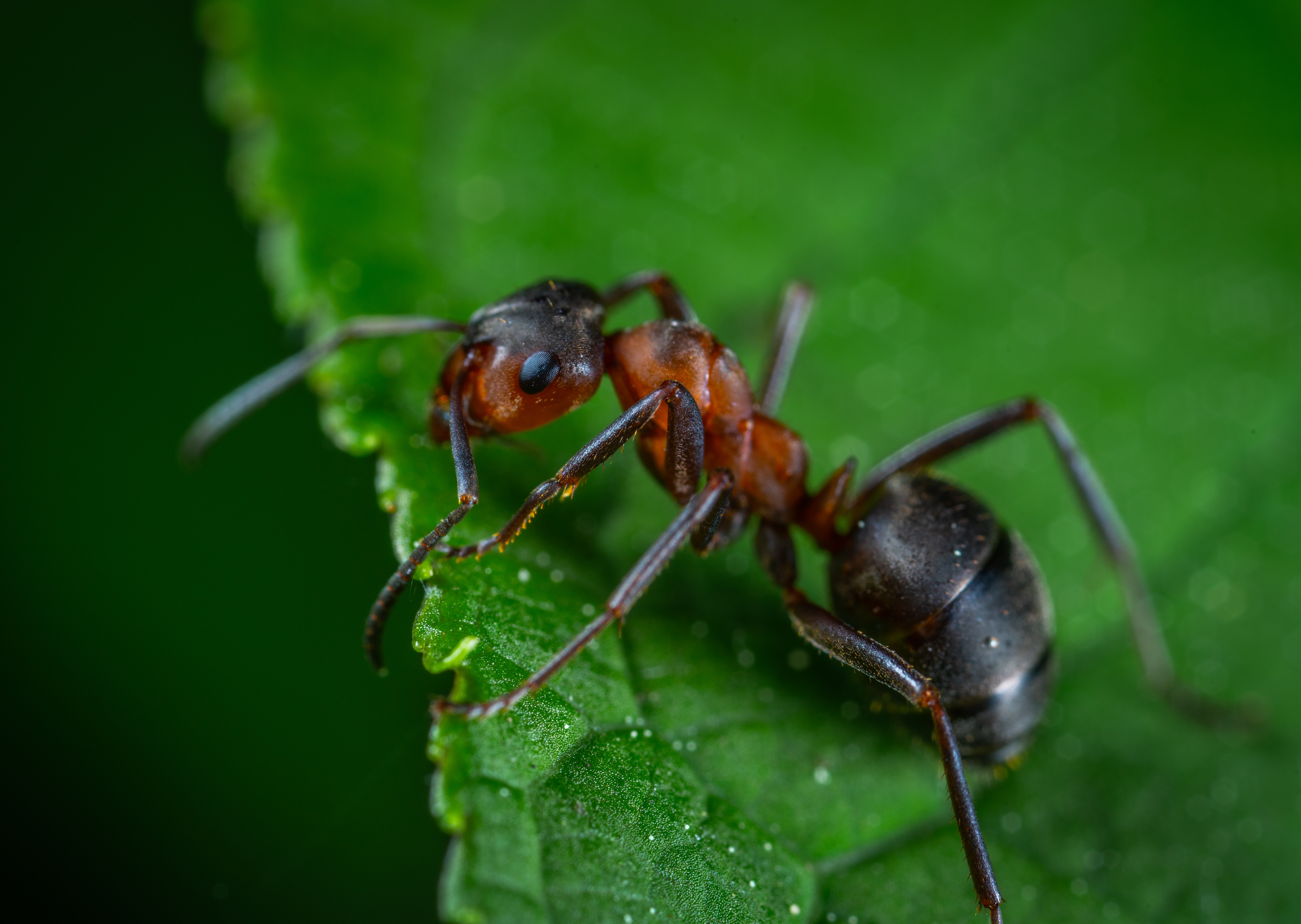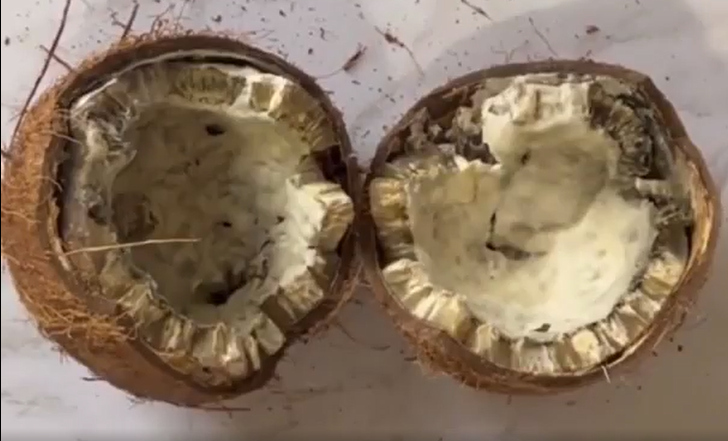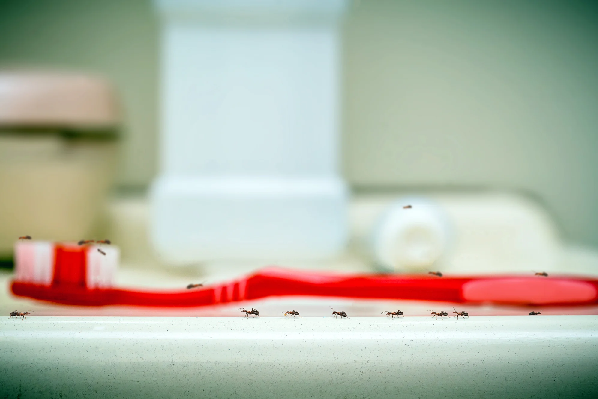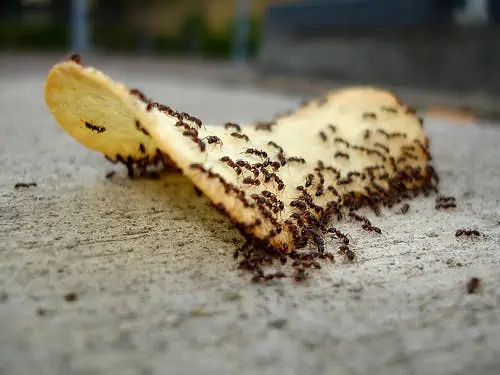Mother’s Day is fast approaching and while there are so many wonderful ways to celebrate the amazing mothers in our lives, there’s a good chance that your celebrations will involve either delicious food or enjoying the great outdoors, or both. Whether you’re planning a picnic, a BBQ, or a nice meal out followed by margaritas by the pool, the last thing you want is for an uninvited guest to crash your mom’s special day. And it’s even worse if that guest has 6 legs and brings thousands of its friends. Yes, we are talking about ants. But not just any ant, we’re talking about an ant that is comfortable around humans, excited to feast on all the sweet treats you can provide, and just an all-around stinker: odorous house ants.

What do Odorous House Ants Look Like?
Odorous house ants are a small ant, only 1/8” long. The worker ants, which comprise the majority of the ant colony, are monomorphic, meaning they are all the same size. They range very little in color, from brown to black, and have a smooth, hairless body. Though there are other characteristics that can help a professional differentiate this type of ant from other small ants, without the benefit of entomological knowledge or a microscope, these characteristics are extremely difficult to detect.

Why are they Called Odorous House Ants?
Perhaps the most notable part of this ant’s name is the very beginning: odorous. They obtained this moniker because when they are crushed they give off a specific rotten coconut-like scent. However, the accuracy of their name doesn’t stop there. The fact that they are called house ants is not accidental. Though they can be found in many different places, they are most often found foraging for food in and around homes.

Where do Odorous House Ants Live?
Before we look at exactly where odorous house ants live, it’s necessary to discuss some characteristics of how this ant operates. In fact, these particular ants share certain significant attributes with several other ant species, and these commonalities have led to the creation of a specific term for this group of ants, they are all “tramp ants.” Importantly, “tramp ants” all share certain habits that make them highly successful and very difficult to control. Some of these traits include: having multiple egg-producing queens per colony, having multiple subcolonies located on separate sites, the ability to distinguish between related and non-related ants and act without hostility toward related ant colonies, the ability to create supercolonies (friendly subcolonies of ants connected by ant trails where they can exchange food, workers, and larvae/pupae), the ability to reproduce by budding (a process where a group of workers and a fertile queen or queens leave to create a new colony) – though it’s also worth mentioning that odorous house ants can also reproduce via mating flights, the ability to live closely with humans, and the ability to thrive in a diverse range of nesting locations. In addition, their colonies can range from quite small (15 or so workers) to giant (hundreds of thousands of workers), with most being in the tens of thousands. Even worse, they are very adept at quickly relocating a colony when it’s disturbed or threatened. All of this means that though you might see these ants in one place at one time, they can quickly move or spread. So if you see any sign of these ants, even if it’s only in one location, it’s worth having The Bug Dude out to help you make sure you don’t have a more extensive infestation than you think you do.
That all said, where exactly will you find these ants?
Outside: they make shallow nests in the soil under a wide array of items. Some of the most common areas are under rocks, mulch, wood piles, decorations, paving stones, and patios. If the ants are disturbed in these areas they will quickly move and may move into places like tree cavities, bird nests, gardens, or even around the base of trees.
Inside: they are looking for undisturbed warm areas that are high in moisture. Some common rooms to find them in are bathrooms and kitchens. Generally, they will be found under bath tubs, under toilets, under sinks, in wall voids, in attics, under carpets, and around window and door frames.

What do Odorous House Ants Eat?
The diet of an odorous house ant consists primarily of sweets and protein. Outdoors, they will feed mostly on honeydew (a sugary fluid excreted by aphids, scales, and a few other insects) and dead insects. Indoors, they may search out other food sources such as sugar, fruit juices, syrup, pastries, meats, and even insects. When these ants go out looking for food, they do so using foraging trails, which are often hidden from our view and can, in fact, even be underground. Generally, these foraging trails are around the edges of a structure and can span over 150 feet.

Are Odorous House Ants Dangerous?
Fortunately, unlike fire ants or carpenter ants, odorous house ants aren’t a particularly dangerous or destructive type of ant. These pests are primarily a concern for 3 reasons. First, they can get into human and pet food and thus contaminate these products, leading to food and monetary waste. Second, if not correctly managed, they can create supercolonies and lead to a long-term formidable pest issue. Third, when disturbed, these ants can bite.
How do you Prevent Odorous House Ants?
Perhaps the most important part of prevention in the case of odorous house ants actually relates to how you handle the ants if you do come across them in or around your home. With these ants it’s particularly important that you call The Bug Dude at 800-310-BUGS (2847) and have an expert technician out to identify the ants and put together a treatment plan, rather than attempting to treat for the ants yourself. Because of the unique attributes of this kind of ant (as we discussed earlier), if you disturb their colonies or foraging trails without using the correct kind of treatment plan, you can simply cause the ants to move a little, meaning you will still have an ant infestation, but now you have to find it all over again, and in the meantime they will be growing in number. So in this case, you are preventing an ongoing or intensifying infestation by having The Bug Dude treat the existing issue.
But what if you haven’t encountered any ants yet? Here are a few tips to help keep odorous house ants away from your home:
- Maintain a regular pest control service with The Bug Dude to not only combat any ant issues that arise, but to keep out other insects, which could become food for the odorous house ants
- Fix any leaks in and around your home
- Reduce areas of excess moisture inside your home
- Keep your yard free from debris and minimize yard decor that directly touches the soil
- Trim shrubs and trees away from your home
- Seal exterior cracks and holes, especially around the foundation, windows, and doors
- If you notice aphids or scales on your yard plants, get them treated
- Keep landscape mulch away from the foundation of your home
- Keep food (including pet food) well covered and appropriately stored
- Don’t leave pet food out past when pets are eating
- Immediately clean up food spills and debris
How do you Eliminate Odorous House Ants?
At the first sign of an odorous house ant infestation, call The Bug Dude at 817-354-5350 to have an expert technician evaluate the problem. Our technicians will assess the issue and put together a strategy to get you back to having an ant-free home in no time. And remember, while it might be tempting to try to take care of the ants yourself, when it comes to DIY ant pest control, if you use the wrong product, or even the right product but in the wrong places, you can quickly take a small problem and make it a giant headache.
This Mother’s Day, don’t let ants turn the day from resplendent to repulsive. At the first sign of these pests, call The Bug Dude and let us help you make sure that your mom is surrounded only by the beautiful scents of flowers, candles, or perfume, and not by the stench of odorous house ants.
Further Reading:
“Odorous House Ants (Tapinoma sessile)” – Ryan Davis, Arthropod Diagnostician, and Austin Taylor, Entomology Assistant – Utah State University Extension and Utah Plant Pest Diagnostic Laboratory
“Odorous House Ant” – Bradleigh S. Vinson – Texas A&M Extension Entomology
“Meet the Odorous House Ant” – PCT
“Odorous House Ants” – PJ Liesch, Diagnostic Lab and Devon Pierret, UW-Madison Entomology – Wisconsin Horticulture, Division of Extension, University of Wisconsin-Madison
Author Bio: Alissa Breach has been gaining knowledge and experience around pest control concerns over the last 13 years while working for Mid-Cities Pest Control. She has a creative writing BA from UW-Madison and is always pursuing new and interesting writing projects.




